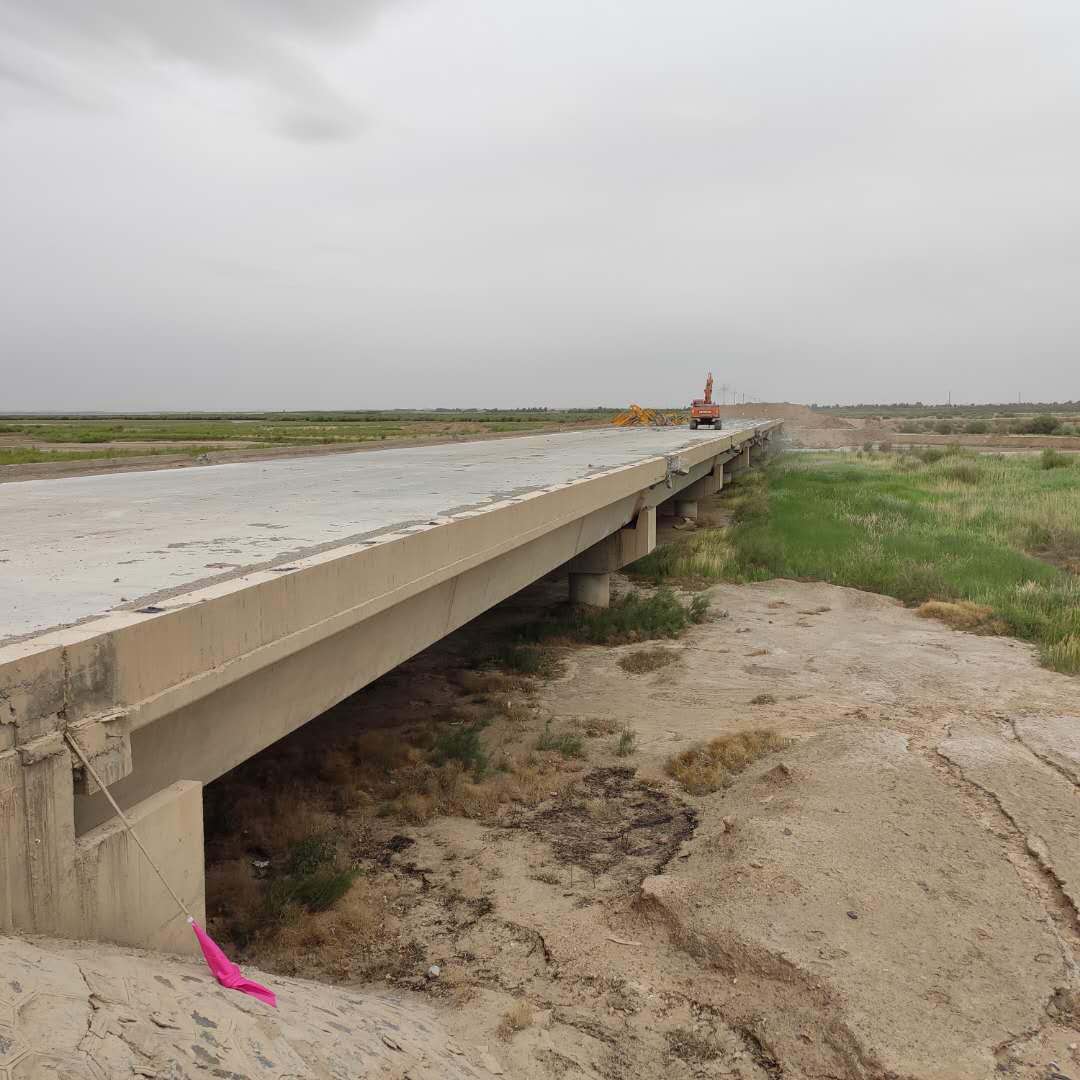The China Biodiversity Conservation and Green Development Foundation (CBCGDF) Comprehensive Department recently sued a private company in Gansu. The company built a bridge in a wetland (Hongya Mountain Reservoir, known as Asia’s largest desert reservoir) with a very important ecological location. At the beginning of the construction of this bridge, no environmental impact assessment, biodiversity survey, assessment and monitoring were done. Then there is no doubt that it is wrong to build this bridge and repair this road, especially it is built in the wetland. After the CBCGDF Comprehensive Department sued them, the local enterprises and the government attached great importance to it, which made us very happy.
But recently, we have received two important opinions from the masses. The first opinion, the masses said that the bridge really brought great convenience to their travel. The second opinion is that after we sued, the company is now demolishing the bridge, and we are very shocked. And immediately filed an injunction to the court to prohibit demolition.
So, everyone does not understand-you said that this bridge destroys the ecological environment, will it be good if it is demolished? This is not the case. Demolition of the bridge is a large-scale construction link. This construction will definitely have a major impact on the ecological environment.
The first impact is that almost all the building materials used in the construction of this bridge were destroyed if they were demolished, which destroyed their use value. Everyone knows that the production of building materials has a great environmental cost. And why there are environmental costs, these building materials must be produced, because these products can contribute value, if the value of these contributions is far greater than their impact on the environment, it is correct. This is what can be controlled in many situations. However, if we dismantle the bridge, the environmental costs of the production link will all become unnecessary waste. This is our first concern.
The second point is that dust, noise, waste, etc. will be generated during the construction process, including the use of oil and electricity are new environmental costs. Here is how to construct to minimize the impact on the environment. Therefore, we say that all major construction projects like this should be evaluated for biodiversity, and then make a decision based on the evaluation. These are two important obvious effects.
The third point, this bridge has been built for some time, it has formed a new natural landscape and habitat. Under this premise, what impact will the demolition of the bridge have on the natural environment formed for the second time? Although perhaps most of the impact is benign, it needs to be evaluated. What is the assessment we are going to carry out now?
The fourth point is the consideration of the convenience of people's travel and its contribution to social value. Contribution of economic value, should we consider this contribution in biodiversity assessment? Of course, this is an important factor-natural capital, natural assets, natural resources are very valuable.
Compare with what? It is the social value it produces. For example, if a nuclear power plant has a certain impact on the environment, it generates a lot of electricity, and at the same time, it does not have a negative impact on the greenhouse gas corresponding to the equivalent value. Then its positive contribution to mankind and society far greater than its negative impact. Then, such a project is acceptable and can be carried out.
Then, when raw rice has been cooked, we need to re-evaluate the benefits this bridge brings to production, life and society. If the benefits brought by far outweigh the negative effects, and the negative effects caused by the demolition process have been comprehensively considered, then the bridge does not have to be demolished.
There are two considerations here: one is whether to dismantle it, and it needs to be re-evaluated. One is how to dismantle, to be re-evaluated.
In a nutshell, a project without an environmental impact assessment is undoubtedly wrong. This is not a single case. We have seen a large number of such incidents in news reports, causing damage to the environment. Therefore, dismantling is often the right decision, but the question is how to dismantle.
For example, another recent illegal reclamation. We paid attention, it also decided to dismantle. However, we believe that no biodiversity assessment was conducted before this decision was made, so biodiversity assessment is necessary.
Moreover, in the process of demolition, if there is no in-depth discussion, no assessment of biodiversity, no matter what kind of project, the error is found, when correcting, you must first make an assessment, do not commit the same error as when it was built. It is necessary to carry out investigation, assessment, monitoring, compensation and adaptation of biodiversity. The demolished project should not cause the second destruction of the ecological environment.
Through systematic research, CBCGDF has published corresponding work standards, a series of standards for biodiversity. Then, through such a series of evaluations, the decisions made after evaluation can be used to protect the public environmental interests more scientifically.
Everyone is hoped to pay attention.
(The above content is organized according to dictation and is not confirmed by the speaker himself.)
https://v.qq.com/x/page/a3108a6ap9h.html
(Video credit: CBCGDF)


(Photo credit: CBCGDF volunteer)
Original Chinese article:
http://www.cbcgdf.org/NewsShow/4854/13050.html
By / Maggie, Yao Jiahui (Intern)
https://www.paypal.me/CBCGDFChina
http://www.cbcgdf.org/English/ConfirmDonaTion/0.html
